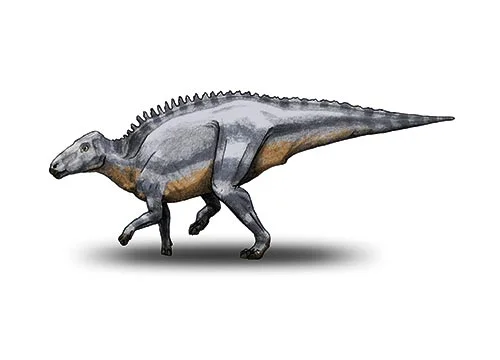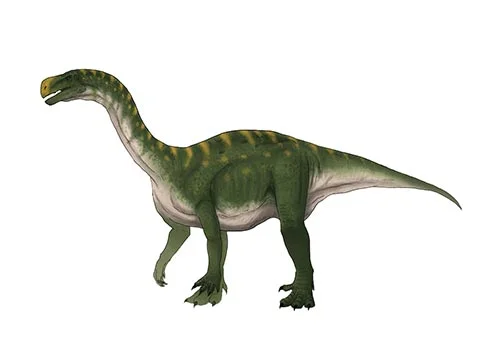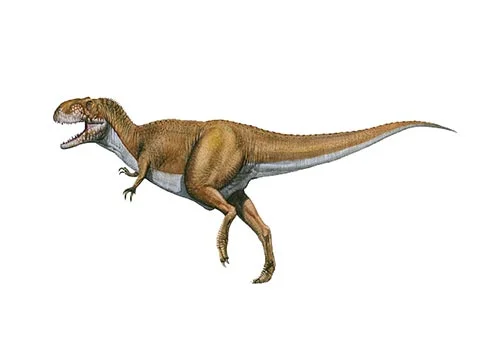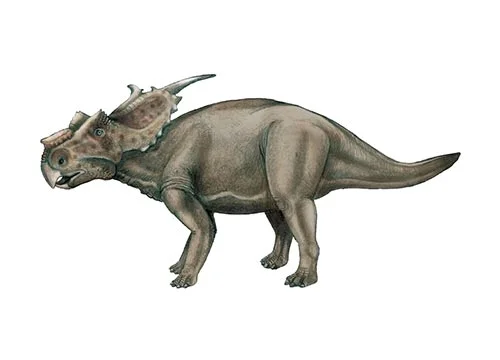Telmatosaurus (Marsh lizard)

Tel-mat-oh-sore-us
B. F. Nopcsa - 1903
Herbivore
Estimated 6-7 meters long
Euornithopod
T. transsylvanicus (type)
France, Spain, Romania - Transylvania - Sanpetru Formation
Late Cretaceous, 70-66 million years ago
Telmatosaurus Facts
Telmatosaurus, also known as the “marsh lizard,” is a genus of hadrosaurid dinosaur that lived during the Late Cretaceous period, around 70-66 million years ago. Its fossils have been found in what is now modern-day Romania.
Telmatosaurus was a medium-sized herbivorous dinosaur, measuring around 20-23 feet (6-7 meters) in length and weighing around 1-2 tons. It had a long, flat, duck-like beak that it likely used to crop low-growing vegetation, and hundreds of small, closely-packed teeth for grinding up plant material. Its hindlimbs were longer and more muscular than its forelimbs, suggesting that it was a fast and agile runner.
The name Telmatosaurus means “marsh lizard” in reference to the swampy, marshy environments where its fossils have been found. It is one of the most well-known hadrosaurids from Europe, and its fossils have provided important insights into the diversity and evolution of these dinosaurs during the Late Cretaceous period.
One of the most distinctive features of Telmatosaurus is its unusual head crest. Unlike other hadrosaurids, which had elaborate and sometimes ornate crests on their heads, Telmatosaurus had a simple, paddle-like crest that extended from the back of its skull. The function of this crest is still a topic of debate among paleontologists, but some researchers have suggested that it may have been used for display or communication.
Telmatosaurus was likely preyed upon by large predators like theropod dinosaurs, and its fossils have been found alongside those of the tyrannosaurid Tarbosaurus. However, its fast and agile nature may have allowed it to evade predators in the open grasslands and marshes where it lived.
In conclusion, Telmatosaurus is an important hadrosaurid dinosaur from Europe that lived during the Late Cretaceous period. Its fossils have provided valuable insights into the diversity and evolution of these dinosaurs, and its unusual head crest has sparked debate among paleontologists about its function. The discovery of Telmatosaurus fossils has also contributed to our understanding of the prehistoric ecosystems and the interactions between herbivorous and carnivorous dinosaurs during this time period.



